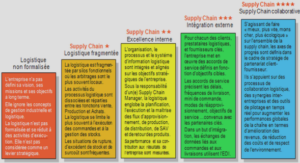In the context of overall flight computer structure environments, three major types of faulttolerant systems can be designed depending on the type of occurred faults. When faults occur in the hardware or software of the flight computer, then a Fault-Tolerant Computing system will be required to handle this kind of faults. When faults occur in actuators, sensors or structure of the aircraft, then a Fault-Tolerant Control system will be required to handle this kind of faults. Finally, if the faults affect the communication links, a Fault-Tolerant Communication system will be required. This thesis elaborates the Fault-Tolerant Control (FTC) systems and especially in the case of actuators’ faults.
Objective of a Fault-Tolerant Control system
A simple conventional feedback control can be very limited, and brings the system to undesired behaviors or even to instability in the presence of an actuator failure. Therefore, the FTC systems have the ability to automatically accommodate the fault to preserve aircraft stability and maintain desired performance in the presence of such faults. The main task of a FTC system is to reconfigure control laws to ensure stability and maintain the desired performance of the system, not only in the normal situation but also when some actuators become failed. FTC systems are classified into two main classes: Passive Fault-Tolerant Control (PFTC) systems and Active Fault-Tolerant Control (AFTC) systems.
Passive and Active Fault-Tolerant Control system
PFTC systems are usually closely related to robust control without requiring any information on faults’ parameters nor controller reconfiguration or adaptation. They have the drawbacks that they are reliable only for a closed class of faults and they degrade system performance even when no faults occur. However, AFTC systems react against component failures using online reconfiguration so that aircraft stability can be preserved and the desired aircraft performance can be maintained. AFTC systems depend on online explicit knowledge of faults’ parameters generated from the so-called FDD process. The FDD process operates as a health supervision module of the system and decides to reconfigure the flight controller when faults occur. In some practical applications, PFTC systems are considered as a complement of AFTC systems. Indeed, PFTC systems are required during execution of the fault detection and diagnosis functions (Zhang, Parisini et Polycarpou, 2004), where they are solicited to preserve the stability of the faulty system until AFTC systems are adapted to the new faulty scenario. A main critical criterion in AFTC systems is the FDD process speed constraint which can be defined by the time required to detect and diagnose a fault. Furthermore, the accuracy of the identified fault information and the robustness of the FDD process to external disturbances are considered important issues.
Table des matières
INTRODUCTION
CHAPTER 1 THE STATE OF THE ART
1.1 Primary and secondary control surfaces
1.1.1 Primary control surfaces
1.1.2 Secondary control surfaces
1.2 Concept of redundancy and FTC
1.3 Avionic systems history
1.4 Actuator faults, failures and malfunctions
1.5 Fault-Tolerant systems: General overview
1.5.1 Objective of a Fault-Tolerant Control system
1.5.2 Passive and Active Fault-Tolerant Control system
1.6 AFTC systems: Literature review
1.6.1 Fault Detection and Diagnosis process
1.6.2 Comparison between popular existing FDD approaches
1.6.3 Reconfiguration mechanism
1.6.4 Reconfigurable Controller (RC)
1.6.5 Comparison between popular existing RC approaches
1.7 AFTC systems using Sliding Mode Controller: Review
1.8 Summary
CHAPTER 2 STANDARD AIRCRAFT DYNAMIC MODELING
2.1 Reference frames
2.1.1 The inertial reference frame
2.1.2 The navigation reference frame
2.1.3 The fixed-body reference frame
2.1.4 The wind reference frame
2.2 Transformation between reference frames
2.3 Nonlinear standard aircraft model
2.3.1 Equations of rigid-body for a translation motion
2.3.2 Equations of rigid-body for an angular motion
2.3.3 Summary of the nonlinear aircraft model
2.4 Decoupling aircraft model
2.4.1 Longitudinal model
2.4.2 Lateral model
2.5 The AFTI-F16 linear aircraft model
2.5.1 The decoupling model used for RC
2.5.2 The decoupling model used for FDD
2.6 The Boeing 767 aircraft linear model
2.7 Description of the manuscript-based chapters
2.7.1 Manuscript-based chapter 3: Design of a tolerant flight control system
in response to multiple actuator control signal faults induced by
cosmic rays
2.7.2 Manuscript-based chapter 4: Applied actuator fault accommodation
in flight control systems using fault reconstruction-based FDD
and SMC reconfiguration
2.7.3 Manuscript-based chapter 5: Reconfigurable flight control system
using multi-projector-based geometric approach and sliding mode
technique
2.8 Summary
CHAPTER 3 DESIGN OF A TOLERANT FLIGHT CONTROL SYSTEM IN
RESPONSE TO MULTIPLE ACTUATOR CONTROL SIGNAL
FAULTS INDUCED BY COSMIC RAYS
Abstract
3.1 Introduction
3.2 Faults Induced By Cosmic Rays
3.2.1 Origins of cosmic rays
3.2.2 Xilinx-ISE® SEU Controller
3.2.3 Emulation of actuator faults induced by cosmic rays
A. Identification of an emulation zone
B. Fault list generation
C. SEU emulation
D. Results analysis
3.2.4 Modeling of actuator faults induced by cosmic rays
3.3 Geometric Approach to Fault Reconstruction
3.3.1 Formulation of the geometric approach
3.3.2 Fault Reconstruction
3.4 Extended Multiple-Model Adaptive Estimation Theory
3.4.1 Formulation of the extended multiple model adaptive estimation
approach
3.4.2 Fault identification and isolation
3.5 Reconfigurable Flight Control Design
3.5.1 Sliding surface design
3.5.2 Design of the sliding mode control law
3.5.3 Reconfiguration mechanism
3.6 Case study
3.6.1 The linear model of the AFTI/F-16 aircraft
3.6.2 The reconfigurable mechanism
3.6.3 Algorithm implementation
3.6.4 Simulation scenario
3.6.5 Simulation results
CONCLUSION
|
 Télécharger le document complet
Télécharger le document complet






